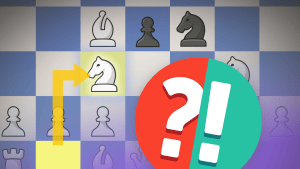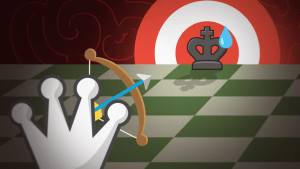
Cute Little Beasts. Part Two.
Today we are going to analyze the games of a very young Bobby Fischer. He was one of the most enigmatic players in the history of chess and looking at his early games I am really puzzled. Let's start with the well known fact: In May 1949, the six-year-old Fischer and his sister learned how to play chess using the instructions from a chess set bought at a candy store below their Brooklyn apartment (Wikipedia). Now fast forward to 1955. Bobby is 12 years old and has been playing chess for 6 years already. Of course 6 years then is not the same as what it is in these days of computers and the Internet and yet I was surprised to see the next game:
So, White shows a complete ignorance, falls into a well known opening trap and doesn't lose the game only because his opponent wasn't a strong chess player either. Usually kids play like this 2-3 years after learning the moves and we are talking about average kids, not the future World Champion. Also at this age we see everything which is completely opposite to the real Bobby Fischer we all know and like. Judge for yourself: Fischer was an outstanding tactician, but in the next game he misses a simple text book combination:
It is common knowledge that it was a waste of time to offer Fischer a draw since he was an ultimate fighter. Yet, look at the next game:
The draw agreement came absolutely unexpectedly in a position full of life...
I am showing you these examples not to pick on one of the best chess player of all times. My only goal is to share my amazement. Something doesn't add up. Could it be that Fischer's official biography is wrong and he learned to play chess much later?
Now let's see the unique transformation that happened in a matter of months.
On the tenth national rating list of the USCF, published on May 20, 1956, Fischer's rating was a modest 1726 (Wikipedia). Now tell me, can a 1700 player beat a GM in an absolutely brilliant game aptly named "The game of the century"? Check out this famous game and try to guess Fischer's moves to truly appreciate the depth of his chess:
One year later Fischer played his signature game that helped to name this variation of the Sicilian after him. Try to find the best attacking moves. You can even improve on Fischer's actual play!
Not a perfect game and yet it clearly shows the energetic style of the future World Champion. And one year later Fischer was already able to beat the best players in the World as the next famous game demonstrates:
Now dear readers you understand why I cannot help but wonder is it really possible for a chessplayer to basically do almost nothing in 6 years and then in a short two year period jump from USCF 1700 to the World's Elite? As you can see, Fischer's chess career was puzzling from the very beginning. We might never find answers for these questions, but one thing is clear: Fischer's early years are very inspiring. They show that with dedication and really hard work you can do miracles!

